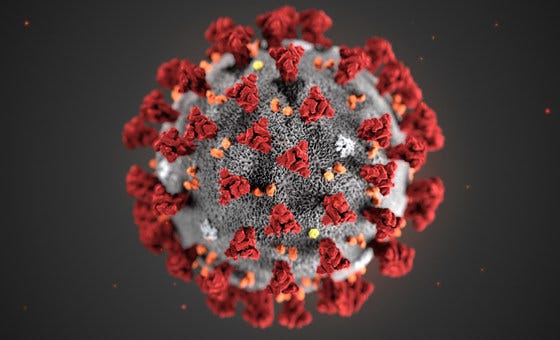As some seem to be busily re-writing their re-collections of history, I feel compelled to contribute to the modern-day historical re-write.
March 2020
You are a key advisor in the Treasury and it’s 6.30am on Saturday 14 March 2020. Your mobile is going ape and you try to turn off the alarm, but eventually realise it’s actually a phone call. It’s one of your Treasury colleagues issuing a all hands on deck call. You need to brief MoF at 4pm and Cabinet Economic Committee at 5pm, before an emergency Cabinet meeting at 8pm that day.
And you are assured this isn’t a drill. Actually, you need little convincing, noting that tomorrow’s national memorial event had already been postponed and a $12.1bn package with business and wage subsidies is set to be announced in the coming week along with a new 4-level alert system. That system included an unprecedented1 potential lockdown of large swathes of business and economic activity if that dreaded level 4 were ever activated.
What was required was a finalisation of an assessment of options in implementing the 4 levels, using the go-to core policy analysis tool - the CBAx2 model. The CBAx model provides a framework for assessing options based on the monetised value of a range of costs and benefits. Using some CBAx coefficients, a first-cut, admittedly crude calculation (it is an emergency Saturday morning), follows:
Should New Zealand “go hard, go early”?
Costs (abridged):
GDP loss over the coming 3 years of the order to $78.7 billion
increased government spending in the form of a response and recovery fund of the order of $62.1 billion.
total known costs (1st approximation) = $140 billion over 3 years
other costs - unknown, but likely to include additional GDP losses if global turmoil eventuates; costs of, and access to, vaccine (if discovered); social disharmony and dislocation if measures extend beyond short-term; inter-generation harm if access to vaccine is impeded
Benefits (first-cut estimated):
lives saved, or number of avoided deaths - no idea, but evidence from abroad indicates it would not be a trivial number
CBAx includes the Value of a Statistical Life (VoSL) at $4.9 million per life3
access to health services stabilised - difficult to quantify, as requires estimate of case numbers, as well as cases avoided to assess robustly
Conclusion
There are too many unknowns for robust modelling. Basing any decision on CBAx modelling would require large caveats. However, at a very first approximation, we note that the $4.9m per life VoSL suggests
moving to level 4 immediately would be a responsible policy if it were expected to save, of the order of, approximately 28,000 or more lives (the equivalent of the full $140 billion first-approximation of the cost)
however, moving to level 4 immediately would be questionable if it were expected to save fewer than 13,000 lives (calculated using the direct government cost of the $62.1 billion response and recovery fund)
Note the gap between these two numbers reflects the large caveats required if one were to rest on CBAx analyses.
Summary for briefing to MoF
“Um, yes Minister, as you can imagine there are lots of caveats here, but
we can only advise in favour “go hard, go early” as long as the number of deaths expected to be avoided is at least 28,000
if avoided deaths are in the range 13,000 to 28,000 then it’s a toss up
if the number of lives saved is expected to be only 12,000 (or even less) then best to let it rip and see how things develop.”
Cabinet decision
We want to err on the side of caution. Consequently, before risking unprecedented harm to businesses and the economy, we would need convincing evidence that the resulting number of deaths would be over 13,000. That evidence is not in front of us, so the only responsible decision is
let it rip.
August 2020
The country has remained open for business, while COVID-19 related deaths now total 20,632 - approximately 1,000 per week. Health services around the country are effectively dysfunctional, with acute staff shortages meaning only 4 hospitals (Auckland City, North Shore, Wellington, Christchurch) open to receiving admissions - although that relies on the rate of ‘clearance’ of existing cases.
Economic activity is minimal despite the absence of any lockdown protocols, with retail, tourism and hospitality bearing the brunt of people’s preference to remain socially distant. Rising unemployment and homelessness add to the downward economic spiral.
August 2025
Deaths related to the pandemic have stabilised considerably - although this is clouded in uncertainty as official statistics ceased separately categorising causes of flu-related illnesses in early-2023. Estimates from various models and studies suggest the total number of deaths attributable to COVID-19 range between 25,000 and 40,000.
Vaccine uptake remains minimal in the face of the cost faced by families and whānau ($50 per person, with one shot required each 6 months), alongside ongoing cynicism as to their effectiveness.
A Commission of Inquiry has been established to examine lessons learnt and is currently hearing evidence.
Inquiry into what we could learn from COVID-19 experience
Question to ex-MoF
Why did you let it rip when you had heavily-caveated advice as to the potential consequences?
Response from ex-MoF
We had advice that, on balance, saving the economy was a better option than saving lives.
Supplementary question to ex-MoF
Lower range estimates of approximately 25,000 deaths would suggest the cost of these losses to be $122.5 billion. Do you take responsibility for such a costly, not to mention tragic, outcome?
Response from ex-MoF
We were facing a very uncertain situation. Yes, I do wish I had the benefit of hindsight, but we were not at the time afforded that luxury. We had to make a decision and - as I said - we had advice that, on balance, saving the economy was a better option than saving lives.
Follow-up supplementary question to ex-MoF
With that benefit of hindsight, there are some suggesting that the value we put on lives in our economic calculations is too low.
We note that the VoSL was subsequently revised4 to be now higher - at an estimated $14.8 million per life. This estimate would take the cost of 25,000 deaths to close to $370 billion. Consequently, would you concur that your decision parameters (and framework) were flawed from the outset?
Response from ex-MoF
I resent the characterisation of your question. Yes, I concede that some - if not many - are more than offended at the concept of putting a monetary value on a life. However, in order to make decisions we rely on parameters and data from experts and are guided by their advice.
POSTSCRIPT
For the avoidance of doubt, the above is fiction - although the figures for the VoSL, as used in the Treasury CBAx model, are correct.
This is not written to offend, but is written to remind many, who seem now have the luxury of hindsight, what the outcome for Aotearoa just might have been.
A word that will fast become thoroughly nauseating.
Cost-Benefit Analysis. The ‘x’ reflects the inclusion in the analysis of the monetised value of non-financial costs and benefits.




